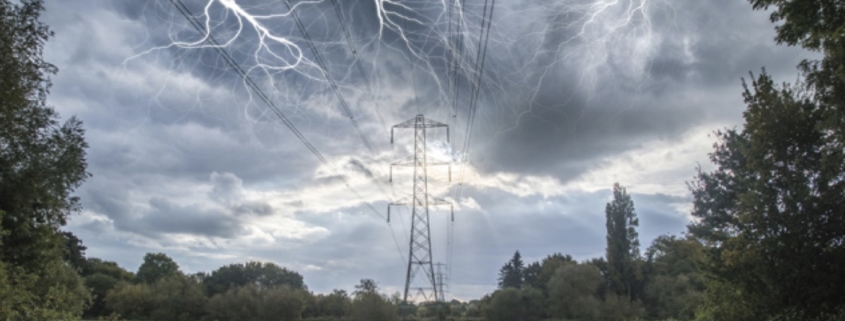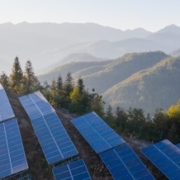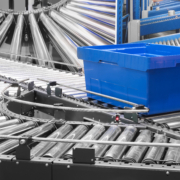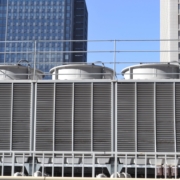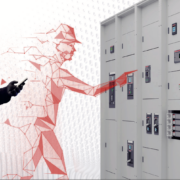Choose the right technology for your surge protection devices
There’s a surge in demand for surge protection, and it will only grow in the future. Panel builders and OEMs need to know the fundamental difference between the two most-common surge protection technologies.
Digital technology has enabled gigantic leaps in new and better features in just about every piece of equipment that runs on electricity. But there’s an Achilles heel to all that technology: power surges.
Older, less sophisticated equipment could usually ride through power surges without damage. Today’s semiconductor-based technology, on the other hand, is far more susceptible to damage or destruction from anomalies with incoming power. That makes it more important than ever to incorporate surge-protection devices (SPDs) in control panels.
Panel builders and equipment OEMs have long offered surge protection as a nice-to-have feature. Today, for an increasing number of applications, it’s becoming a need-to-have feature.
A surge in surges
Surges (a.k.a., transients) are brief overvoltage spikes or disturbances on a power waveform that can damage, degrade, or destroy electronic equipment. About 80% of surges in your facility originate inside your walls. Load switching, variable frequency drives, compressors, and lighting and air-handling systems can all create internal disturbances to your power.
You are also far more likely now than in the past to experience external disturbances. Most people assume that lightning strikes are the most common external disturbance. To be sure, those strikes can do tremendous damage and remain a concern. But today there is a far more common, and surprising, source of surges: switching.
Twenty years ago, your electric power was almost certainly provided by a coal-fired power plant. Hydroelectric provided power in some areas and nuclear also contributed a share of the power. But coal was the major player when it came to generating electricity.
Today coal’s role is significantly smaller, and the power portfolio is far more complex. The tremendous push to rely on renewables, or “clean” energy, means that the power passing through your panel can be coming from many different sources. Utilities routinely switch those sources in and out during the course of the day, and each switch means a potential surge.
NEC steps in
NEC added its first requirement for SPDs in 2008. Since then, seven more SPD requirements have been added. Recognizing that our homes are crammed with sensitive digital equipment, a 2020 standard (230.67) mandates SPDs in all new residential construction.
In industrial/commercial applications, NEC standards now require surge protection in:
- Emergency system switchboards and panelboards (700.9)
- Industrial machinery with safety interlock circuits (670.6)
- Critical-operation data systems (645.18)
- Where any of the disconnecting means … has been designated as supplying an emergency system load [620.51(E)]
The list of applications requiring SPDs will only grow longer, driving increased demand for surge protection. The global market for SPDs is expected to more than double by 2030.[1] This is a clear sign that panel builders should be taking a hard look at increasing their knowledge and use of SPDs. But it’s essential to carefully evaluate your choice of SPD technology.
All SPDs are not the same
SPDs are installed in parallel to the incoming voltage. When a surge hits a panel, the surge has to figure out where to go. Like water, it will always take the path of least resistance as it seeks ground. You don’t want that path to be through your pumps, motors, or machinery. SPDs create a path that protects your assets.
There are a variety of technologies available to provide surge protection. The most widely used core component in SPDs has long been the metal oxide varistor (MOV). At normal current levels, power bypasses the SPD and provides power to the connected loads. During a surge, the MOV diverts the current into itself, limiting the voltage and fulfilling its protective function for downstream devices.
But unless the SPD includes an internal interrupting device, or the panel design incorporates fuses or circuit breakers connected to the SPD, the surge can damage or destroy the SPD, leaving equipment unprotected.
More-advanced panels incorporate thermally protected metal oxide varistors (thermally protected MOVs). They include a thermal disconnect that is part of the component that removes the component from the circuit in a safe way. leaving the protective circuitry undamaged.
While NEC standards specify that surge protection is required, they provide no guidance on what devices should be used to provide that protection. That leaves it up to you to make smart choices. In most cases, the more-capable thermally protected MOV is the right choice, providing important benefits compared to the older MOV technology.
It’s also important to consider the source of your SPD. You can find very low-cost components, but that lower cost may represent a false economy considering the reduced reliability and safety these cheaper offerings represent.
Protect your panels and end-user assets
The demand for SPDs in your panel and equipment designs is growing and will continue to do so. For your end users, these devices help reduce equipment failure and related downtime, reduce maintenance and repair, and help ensure compliance with NEC requirements. And the bottom line is that they should save your end users money and aggravation.
When selecting the right SPD to incorporate in your designs, consider the value of relying on thermally protected MOVs rather than the older MOV technology. And be sure to source your SPDs from a reliable supplier that will provide you with the confidence that the device will safely provide the needed protection for their valuable assets.
For more information, be sure to check out “Why the increased need for surge protection?”
—
Chris Martin
Sales Manager, US Surge Protective Devices
Kim Fairley
Product Marketing Manager, Surge Protective Devices
[1] https://www.researchandmarkets.com/reports/4312573/surge-protection-devices-market-size-share-and

